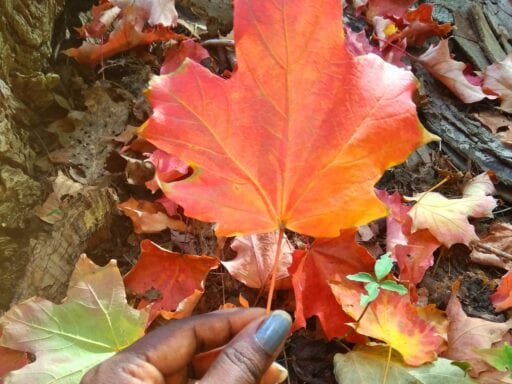It’s been a tough fall, and everyone deserves some leaf therapy.
In the era of anxiety-producing color-coded maps, from Covid-19 case counts to election forecasts, the map below is a sight for sore eyes.
The fall foliage prediction map, created by tourism site SmokyMountains.com, shows when each region across the country will be at its most colorful this year. The map’s algorithm uses temperature and rainfall data from the National Oceanic and Atmospheric Administration (NOAA) along with data from observations, according to David Angotti, the founder of the site and the map’s creator.
The good news—it’s not too late. While the Rockies and the northern tips of Maine and Minnesota are already past peak foliage, according to the map, the rest of the country is entering prime “leaf-peeping” season. You can toggle through the rest of the fall on the interactive map and see when the canopies in your region will be fully flush. (Also to note: the map’s prediction, is just that, a prediction. Go outside to see how accurate it is for yourself!)
From green to gold: leaf color change explained
One of the upsides of the pandemic is that social distancing guidelines don’t forbid us from observing the natural world. To help you track the foliage transformation in real time, here’s a guide to the inner workings of the leaf.
The shift in leaf color is part of a tree’s larger preparation for winter. In the spring and summer months when the days are long, broad-leafed or deciduous trees use chlorophyll (the green pigment in leaves) to photosynthesize, producing sugars. But that process breaks down as the days shorten.
“As it gets colder and darker as autumn arrives, having leaves packed with chlorophyll costs plants a lot of energy for little return,” Fernando Gomollon-Bel explained in Chemistry World. “This is because chemical reactions proceed more slowly when it’s cold, and the shorter days and more diffuse light mean little energy is harvested.”
As the last chlorophyll fades away with the arrival of autumn, the warm hues of fall start to pop. The yellow pigments (xanthophylls) and orange pigments (carotenoids) were in the leaf all along—they also play a role in photosynthesis—but they are revealed once the chlorophyll disappears for the season.
The most eye-catching red and purple pigments (called anthocyanin) remain somewhat mysterious. Craig Smith wrote in the New York Times, “Its role in autumn leaves is not well understood, but current theories suggest that some trees have evolved to produce it to protect their leaves from the damaging effects of intense sunlight while the chlorophyll breaks down — the red pigment absorbs wavelengths in the green region of the spectrum that would otherwise be reflected by the disappearing chlorophyll.”
Eventually, the color show comes to an end when trees cut their leaves off because unlike thin evergreen needles, deciduous broad leaves cannot weather the winter.
Different tree species undergo this transformation at different points in the fall, but the map should give you a good indication of days for the best leaf-peeping in your neighborhood. And, in the midst of a series of climate disasters, rising temperatures have at least given us one good thing: trees are staying colorful longer.
Millions turn to Vox each month to understand what’s happening in the news, from the coronavirus crisis to a racial reckoning to what is, quite possibly, the most consequential presidential election of our lifetimes. Our mission has never been more vital than it is in this moment: to empower you through understanding. But our distinctive brand of explanatory journalism takes resources. Even when the economy and the news advertising market recovers, your support will be a critical part of sustaining our resource-intensive work. If you have already contributed, thank you. If you haven’t, please consider helping everyone make sense of an increasingly chaotic world: Contribute today from as little as $3.
Author: Lili Pike
Read More



